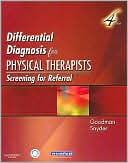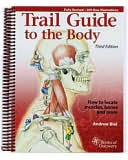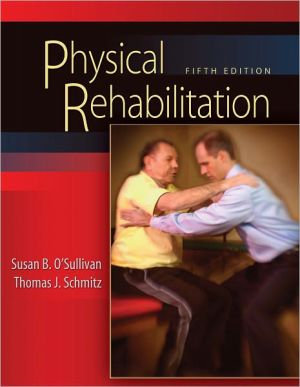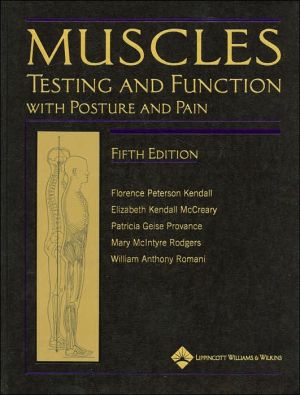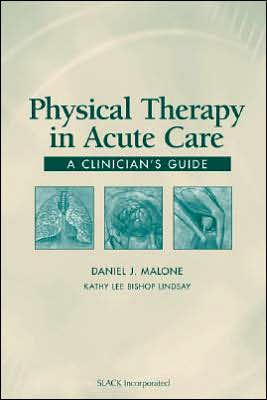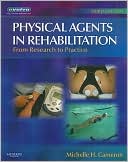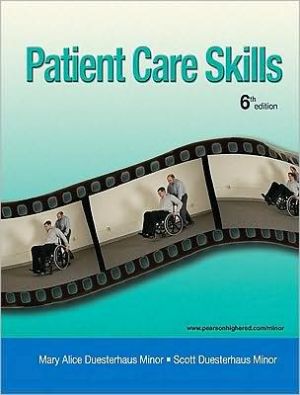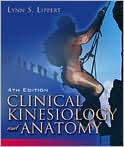Differential Diagnosis for Physical Therapists: Screening for Referral
Search in google:
Written by a leading expert in the field, this comprehensive reference text enables users to properly screen for medical disease to make an informed diagnosis. The goal of this proven text is to teach the Physical Therapist how to determine if the patient has a true neuromuscular or musculoskeletal problem and to determine the specific dysfunction or impairment. Now with a new title that reflects a better understanding of the screening process as the first step in making a diagnosis, this text provides students, physical therapy clinicians and physical therapist assistants with a step-by-step approach to client evaluation, which follows the standards of competency established by the American Physical Therapy Association (APTA) related to conducting a screening examination.A systems-based approach to differential screening and diagnosis make it easy for Physical Therapists to find information and understand it in light of other systems issues.CD-ROM with screening tools provides Physical Therapists with forms and checklists they can use in the clinical setting.Case studies provide real-world examples.New chapter on how physical assessment provides baseline-screening information to better explain the progression of the screening process.Includes new information on musculoskeletal problems.A separate chapter on pain introduces the concept of pain as a screening tool.An entire section is devoted to systematic origins of pain to demonstrate how regional pain should be approached in screening for particular disorders.Introductory information on the newer medical screening concepts sets the stage for how screening is presented in the rest of the book. Doody Review Services Reviewer:Christopher James Hughes, PT,PhD,OCS,CSCS(Slippery Rock University)Description:The title accurately describes this book and the audience for whom it is written: it will enable physical therapists to recognize the presence of a medical condition that requires appropriate referral. The previous edition was published in 2000.Purpose:The purpose is to provide physical therapists with the evaluative tools to effectively screen for medical conditions and refer to physicians for further evaluation. As the field of physical therapy moves toward an expanded role in healthcare, this book is timely and has quickly become an essential text in most physical therapy curricula. The book is an excellent representation of the authors' objectives.Audience:Physical therapy students will find this book essential in preparing them to face the realities of clinical practice. In addition, experienced clinicians in an outpatient or inpatient setting will also find it to be a great resource. The authors target both groups effectively with their writing. Features:Three major sections comprise this 18-chapter text. Section one covers the interview process and a thorough discussion on pain. Section two uses a systems approach and chapters address each organ system and various disease processes that can refer to the neuromusculoskeletal system. The third section, greatly expanded from the previous edition, is divided into chapters by body regions. Additional resources include four major appendixes and a CD-ROM that contains ready to print intake forms and animations to reinforce the screening process. (The CD-ROM is easy to preview and does not require installation of files on the computer hard drive.) A separate section provides answers to practice test questions which appear throughout the book and numerous case studies reinforce comprehension of the material. Illustrations are particularly well done. Assessment:This book continues to deliver valued information in a practical manner to the target audience. The upgrades in the fourth edition place it among the best in this area. Even if readers already have the third edition, the fourth edition is a good investment.
Section One: Introduction to the Screening Process1. Introduction to Screening for Referral in Physical Therapy2. Interviewing As a Screening Tool3. Pain Types and Viscerogenic Pain Patterns4. Physical Assessment as a Screening ToolSection Two: Viscerogenic Causes of Neuromusculoskeletal Pain and Dysfunction5. Screening for Hematologic Disease6. Screening for Cardiovascular Disease7. Screening for Pulmonary Disease8. Screening for Gastrointestinal Disease9. Screening for Hepatic and Biliary Disease10. Screening for Urogenital Disease11. Screening for Endocrine and Metabolic Disease12. Screening for Immunologic Disease13. Screening for CancerSection Three: Systemic Origins of Neuromusculoskeletal Pain and Dysfunction14. Screening in the Head, Neck, and Back15. Screening in the Sacrum, Sacroiliac, and Pelvis16. Screening in the Lower Quadrant: Buttock, Hip, Thigh, Groin, and Leg17. Screening in the Chest, Breast, and Ribs18. Screening in the Shoulder and Upper ExtremityAppendicesA. Screening SummaryB. Special Questions to AskC. Special Forms to UseD. Special Tests to Perform
